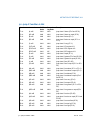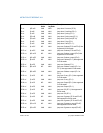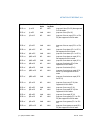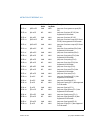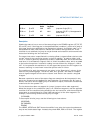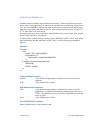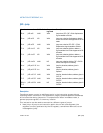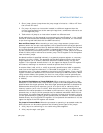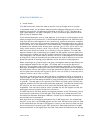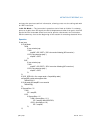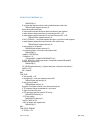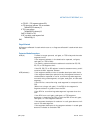
Vol. 2A 3-509
INSTRUCTION SET REFERENCE, A-M
JMP—Jump
• Short jump—A near jump where the jump range is limited to –128 to +127 from
the current EIP value.
• Far jump—A jump to an instruction located in a different segment than the
current code segment but at the same privilege level, sometimes referred to as
an intersegment jump.
• Task switch—A jump to an instruction located in a different task.
A task switch can only be executed in protected mode (see Chapter 6, in the Intel®
64 and IA-32 Architectures Software Developer’s Manual, Volume 3A, for information
on performing task switches with the JMP instruction).
Near and Short Jumps. When executing a near jump, the processor jumps to the
address (within the current code segment) that is specified with the target operand.
The target operand specifies either an absolute offset (that is an offset from the base
of the code segment) or a relative offset (a signed displacement relative to the
current value of the instruction pointer in the EIP register). A near jump to a relative
offset of 8-bits (rel8) is referred to as a short jump. The CS register is not changed on
near and short jumps.
An absolute offset is specified indirectly in a general-purpose register or a memory
location (r/m16 or r/m32). The operand-size attribute determines the size of the
target operand (16 or 32 bits). Absolute offsets are loaded directly into the EIP
register. If the operand-size attribute is 16, the upper two bytes of the EIP register
are cleared, resulting in a maximum instruction pointer size of 16 bits.
A relative offset (rel8, rel16, or rel32) is generally specified as a label in assembly
code, but at the machine code level, it is encoded as a signed 8-, 16-, or 32-bit
immediate value. This value is added to the value in the EIP register. (Here, the EIP
register contains the address of the instruction following the JMP instruction). When
using relative offsets, the opcode (for short vs. near jumps) and the operand-size
attribute (for near relative jumps) determines the size of the target operand (8, 16,
or 32 bits).
Far Jumps in Real-Address or Virtual-8086 Mode. When executing a far jump in real-
address or virtual-8086 mode, the processor jumps to the code segment and offset
specified with the target operand. Here the target operand specifies an absolute far
address either directly with a pointer (ptr16:16 or ptr16:32) or indirectly with a
memory location (m16:16 or m16:32). With the pointer method, the segment and
address of the called procedure is encoded in the instruction, using a 4-byte (16-bit
operand size) or 6-byte (32-bit operand size) far address immediate. With the indi-
rect method, the target operand specifies a memory location that contains a 4-byte
(16-bit operand size) or 6-byte (32-bit operand size) far address. The far address is
loaded directly into the CS and EIP registers. If the operand-size attribute is 16, the
upper two bytes of the EIP register are cleared.
Far Jumps in Protected Mode. When the processor is operating in protected mode, the
JMP instruction can be used to perform the following three types of far jumps:
• A far jump to a conforming or non-conforming code segment.
• A far jump through a call gate.



